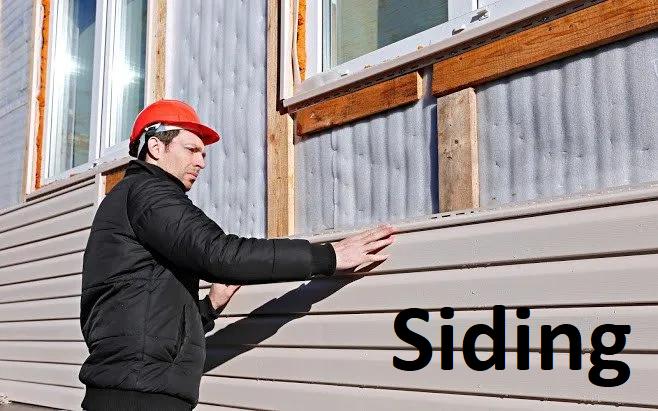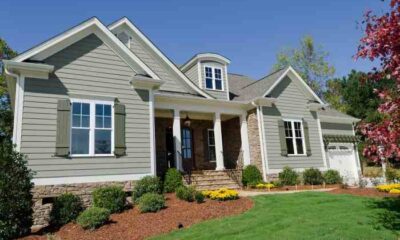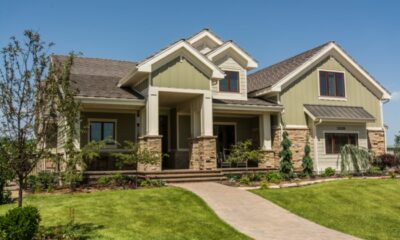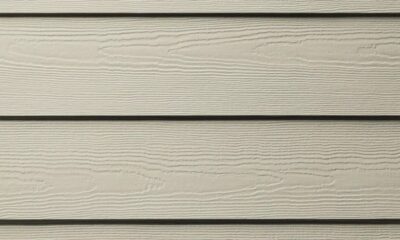Construction
Exploring the World of Global Siding and Roofing

Global siding and roofing form the backbone of construction projects worldwide, playing a vital role in the aesthetics and durability of buildings. This engaging narrative delves into the various aspects of these essential elements, shedding light on their significance and impact in the industry.
As we uncover the different types of materials, sustainable practices, design trends, and maintenance tips, readers will gain a comprehensive understanding of the world of global siding and roofing.
Overview of Global Siding and Roofing
Global siding and roofing are essential components of the construction industry, providing protection and aesthetics to buildings worldwide. Siding refers to the external cladding material installed on the walls of a building, while roofing encompasses the materials used to cover the top of a structure to protect it from environmental elements.Quality siding and roofing are crucial for the longevity and durability of buildings, as they serve as the first line of defense against weather conditions such as rain, wind, snow, and UV radiation.
Properly installed siding and roofing also contribute to energy efficiency by insulating the building and reducing heating and cooling costs.Some popular global siding materials include vinyl, wood, fiber cement, and metal. Each material offers unique benefits in terms of durability, maintenance, and aesthetics.
Similarly, common roofing materials include asphalt shingles, metal roofing, clay tiles, and slate. The choice of siding and roofing materials often depends on factors such as climate, architectural style, budget, and personal preference.
Types of Global Siding Materials
There are various types of siding materials used globally, each with its own unique characteristics in terms of durability and aesthetic appeal.
Vinyl Siding
- Vinyl siding is a popular choice for its affordability and low maintenance requirements.
- It is durable, resistant to rot, and comes in a wide range of colors and styles.
- Examples of buildings showcasing vinyl siding include suburban homes and commercial buildings.
Wood Siding
- Wood siding offers a natural and timeless look to a building.
- It can be painted or stained to achieve different aesthetics.
- While wood siding adds warmth and character, it requires more maintenance compared to other materials.
Fiber Cement Siding
- Fiber cement siding is known for its durability and resistance to fire, water, and pests.
- It can mimic the look of wood or stucco without the maintenance issues.
- Examples of buildings with fiber cement siding include modern homes and commercial structures.
Brick Siding
- Brick siding offers a classic and elegant appearance to a building.
- It is highly durable, weather-resistant, and requires minimal maintenance.
- Historic buildings and upscale homes often feature brick siding.
Stone Veneer Siding
- Stone veneer siding provides a luxurious and high-end look to a building.
- It is lightweight and easy to install compared to natural stone.
- Stone veneer siding can be seen on upscale residential homes and commercial buildings.
Types of Global Roofing Materials
Roofing materials play a crucial role in protecting buildings from the elements and enhancing their overall aesthetic appeal. There are several types of roofing materials used on a global scale, each with its unique characteristics, advantages, and environmental impact.
Asphalt Shingles
Asphalt shingles are one of the most popular roofing materials worldwide due to their affordability, durability, and ease of installation. They come in a variety of colors and styles, making them versatile for different architectural designs. However, asphalt shingles have a shorter lifespan compared to other roofing materials and may contribute to landfill waste due to their non-biodegradable nature.
Metal Roofing
Metal roofing, including materials like steel, aluminum, and copper, is known for its longevity, energy efficiency, and recyclability. Metal roofs can withstand extreme weather conditions, resist fire, and reflect sunlight, reducing cooling costs. While metal roofing is initially more expensive than other options, its durability and low maintenance requirements make it a cost-effective choice in the long run.
Clay Tiles
Clay tiles have been used for centuries and are valued for their timeless aesthetic appeal, durability, and resistance to fire and pests. They are available in various shapes, sizes, and colors, adding a unique touch to a building's exterior. However, clay tiles are heavy, requiring a strong roof structure for support, and may be prone to breakage in harsh weather conditions.
Slate Roofing
Slate roofing is a premium option known for its elegance, longevity, and natural beauty. It has a distinctive appearance and can last for over a century with proper maintenance. While slate roofing is environmentally friendly and recyclable, it is also one of the most expensive roofing materials available, making it less accessible to homeowners on a budget.
Green Roofs
Green roofs, also known as living roofs, involve the installation of vegetation on the roof surface. They provide numerous environmental benefits, including improved insulation, stormwater management, and air quality. Green roofs can reduce energy costs, extend the lifespan of the roof membrane, and create a habitat for wildlife
However, the installation and maintenance of green roofs can be complex and costly, requiring specialized expertise.
Sustainable Practices in Global Siding and Roofing
When it comes to global siding and roofing, sustainable practices play a crucial role in reducing environmental impact and promoting long-term durability. By incorporating eco-friendly initiatives in the production and installation of siding and roofing materials, the industry can contribute to a more sustainable future.
Eco-Friendly Practices in Production and Installation
- Utilizing recycled materials in the manufacturing process to reduce waste and energy consumption.
- Implementing energy-efficient practices in production facilities to lower carbon emissions.
- Promoting the use of sustainable installation methods to minimize environmental disruption.
Importance of Sustainability in the Industry
Sustainability is essential in the siding and roofing industry to preserve natural resources, reduce pollution, and lower the carbon footprint. By adopting sustainable practices, companies can contribute to a healthier environment and meet the growing demand for eco-friendly construction solutions.
Innovative Sustainable Solutions
- Green roofs: Installing vegetation on roofs to improve air quality, reduce energy consumption, and enhance insulation.
- Solar panels: Integrating solar panels into roofing systems to harness renewable energy and lower electricity costs.
- Bamboo siding: Using bamboo as a sustainable alternative to traditional siding materials, due to its fast growth rate and durability.
Global Trends in Siding and Roofing Design
As the world becomes more interconnected, global trends in siding and roofing design are constantly evolving to reflect a blend of cultural influences, technological advancements, and sustainability practices.
Current Trends in Siding and Roofing Designs
Across different regions, there is a growing emphasis on modern and minimalist siding and roofing designs. Sleek lines, neutral colors, and eco-friendly materials are becoming increasingly popular choices for homeowners looking to update their exteriors.
Cultural Influences on Siding and Roofing Designs
Cultural influences play a significant role in the choice of siding and roofing designs globally. In regions with a rich architectural history, traditional elements such as clay tiles, wooden shingles, or stucco finishes are often incorporated into modern designs to maintain a sense of heritage and identity.
Cutting-Edge Technologies Shaping the Future of Design
Advancements in technology are revolutionizing the way siding and roofing designs are conceptualized and implemented. From 3D modeling software that allows for precise customization to the development of innovative materials like solar shingles and insulated siding, the future of design is focused on efficiency, sustainability, and aesthetics.
Maintenance Tips for Global Siding and Roofing
Proper maintenance of siding and roofing systems is crucial to ensure their longevity and functionality. By following essential maintenance practices, you can protect your home from potential damage and costly repairs in the future.
Inspecting Siding and Roofing Materials
- Regularly inspect the siding and roofing for any signs of damage, such as cracks, holes, or loose shingles.
- Check for mold, mildew, or rot, as these can indicate underlying issues that need to be addressed.
- Ensure that all flashing and seals are intact and in good condition to prevent water infiltration.
Cleaning Siding and Roofing
- Regularly clean your siding and roofing to remove dirt, debris, and organic growth that can cause damage over time.
- Use a gentle cleaning solution and a soft brush to avoid scratching or damaging the materials.
- Consider hiring professional cleaners for a thorough and safe cleaning process, especially for hard-to-reach areas.
Repairing Siding and Roofing Materials
- Address any minor repairs promptly to prevent them from escalating into larger issues that require extensive repairs or replacements.
- Replace damaged or missing shingles, siding panels, or flashing to maintain the structural integrity of your home.
- Seal any gaps or cracks in the materials to prevent water infiltration and ensure proper insulation.
Protecting from Weather-Related Damage
- Trim trees and branches that could potentially damage your siding or roofing during storms or high winds.
- Ensure proper drainage to avoid water pooling on your roof, which can lead to leaks and water damage.
- Consider applying a protective coating or sealant to your siding and roofing to enhance their durability and resistance to weather elements.
Final Summary
From exploring innovative solutions to discussing environmental considerations, this discussion on global siding and roofing has offered a glimpse into the intricate world of construction. As we look towards the future, the evolution of these elements will continue to shape the architectural landscape worldwide.
Essential Questionnaire
What are the key components of global siding and roofing?
Global siding and roofing encompass materials used in construction projects worldwide, emphasizing quality, durability, and aesthetic appeal.
How do cultural influences impact siding and roofing designs globally?
Cultural influences play a significant role in determining the choice of siding and roofing designs, reflecting regional preferences and architectural traditions.
What are some essential maintenance practices for global siding and roofing?
Regular inspection, cleaning, and timely repairs are crucial for maintaining the longevity and functionality of siding and roofing systems.
-

 General6 months ago
General6 months agoFinding the Best Siding Contractors Near Me: A Comprehensive Guide
-

 General6 months ago
General6 months agoExploring the World of Interiors
-

 General6 months ago
General6 months agoEnhancing Your Home: Custom Home Exteriors
-

 General6 months ago
General6 months agoExploring the Roof Replacement Cost Estimate: Factors, Materials, and Labor
-

 General6 months ago
General6 months agoThe Ultimate Guide to Licensed Home Improvement Contractors
-

 General6 months ago
General6 months agoExploring the Beauty of Hardie Cobblestone
-

 Architecture6 months ago
Architecture6 months agoExploring the World of Interior Architecture
-

 General6 months ago
General6 months agoExploring the Best Replacement Window Companies for Your Home





